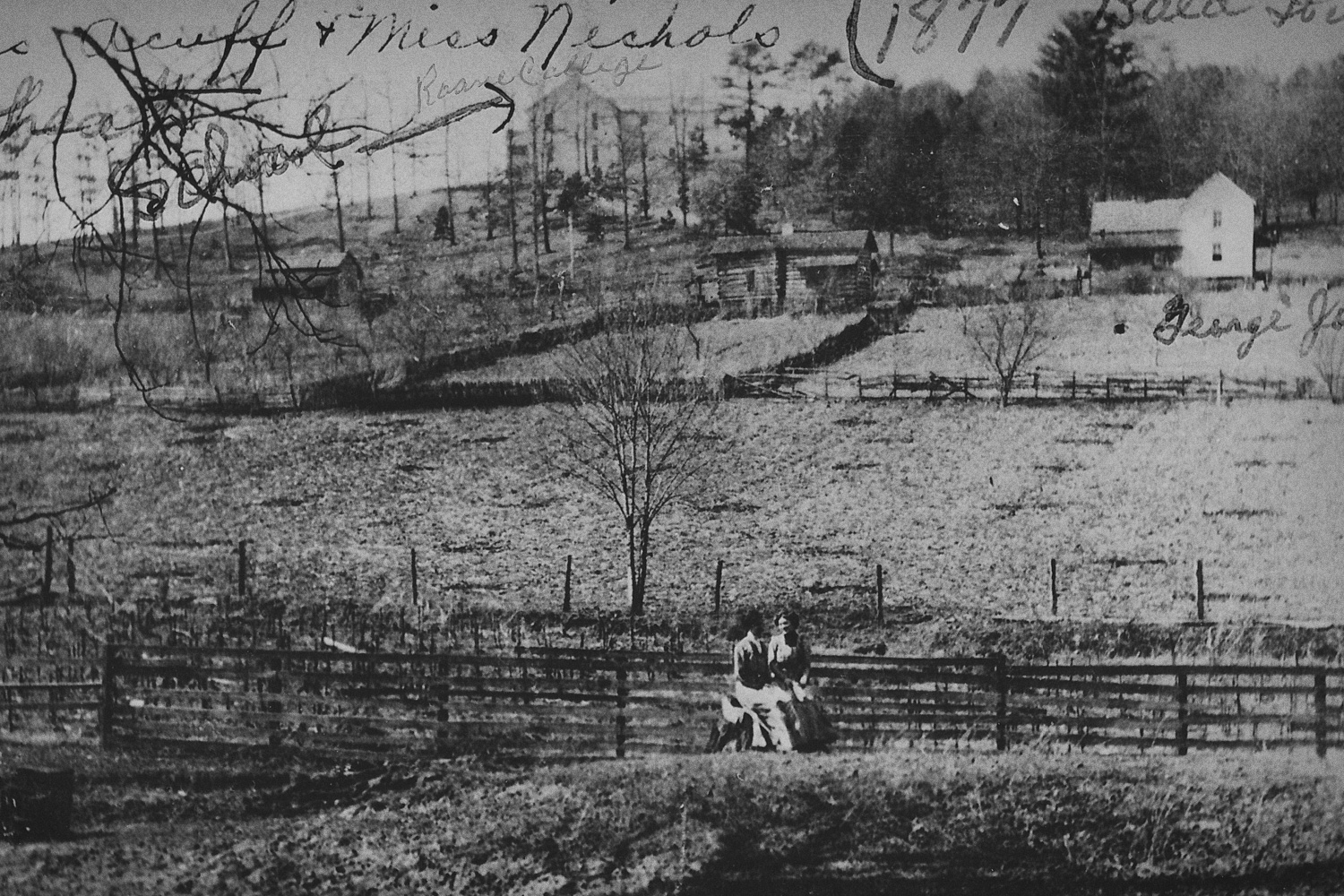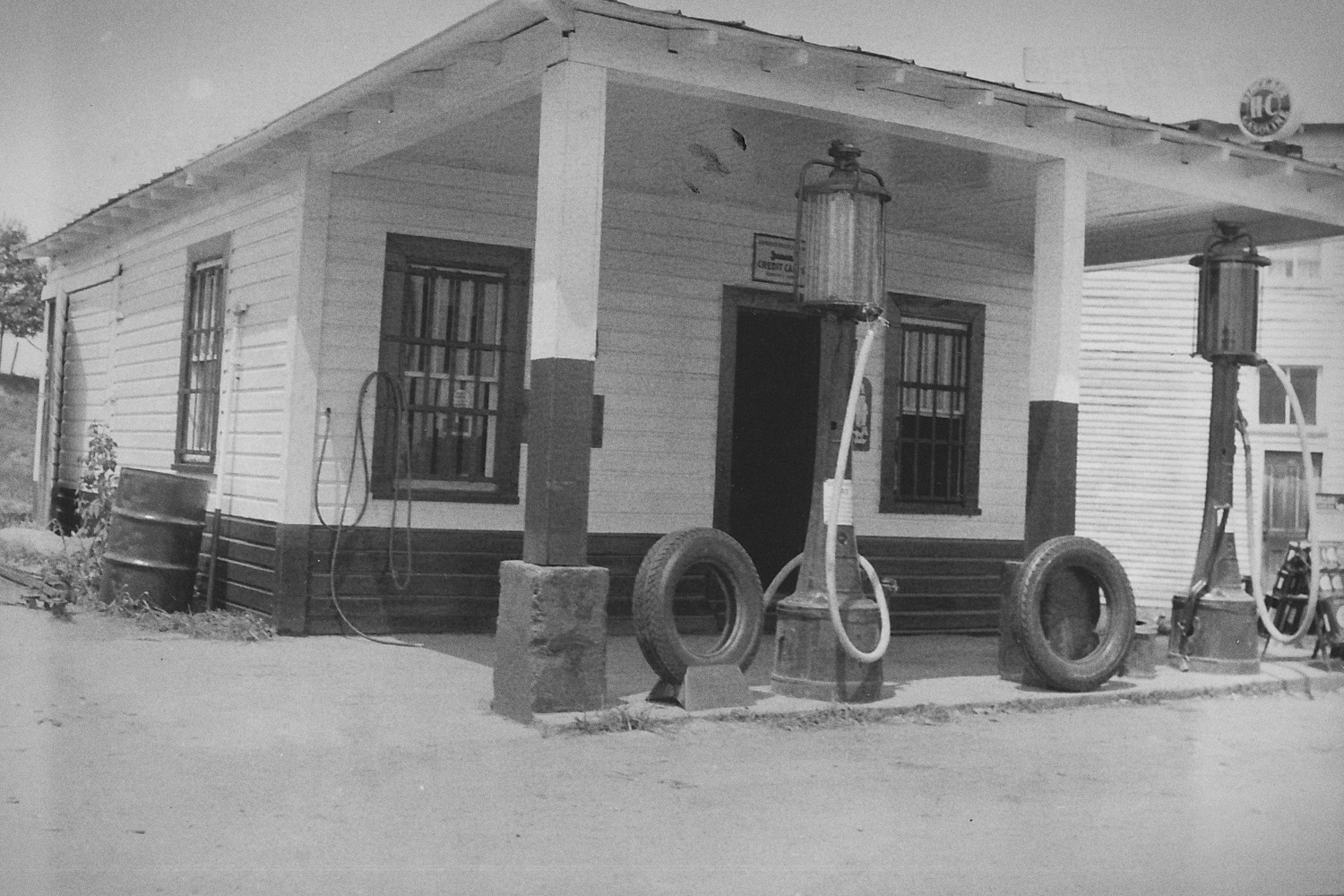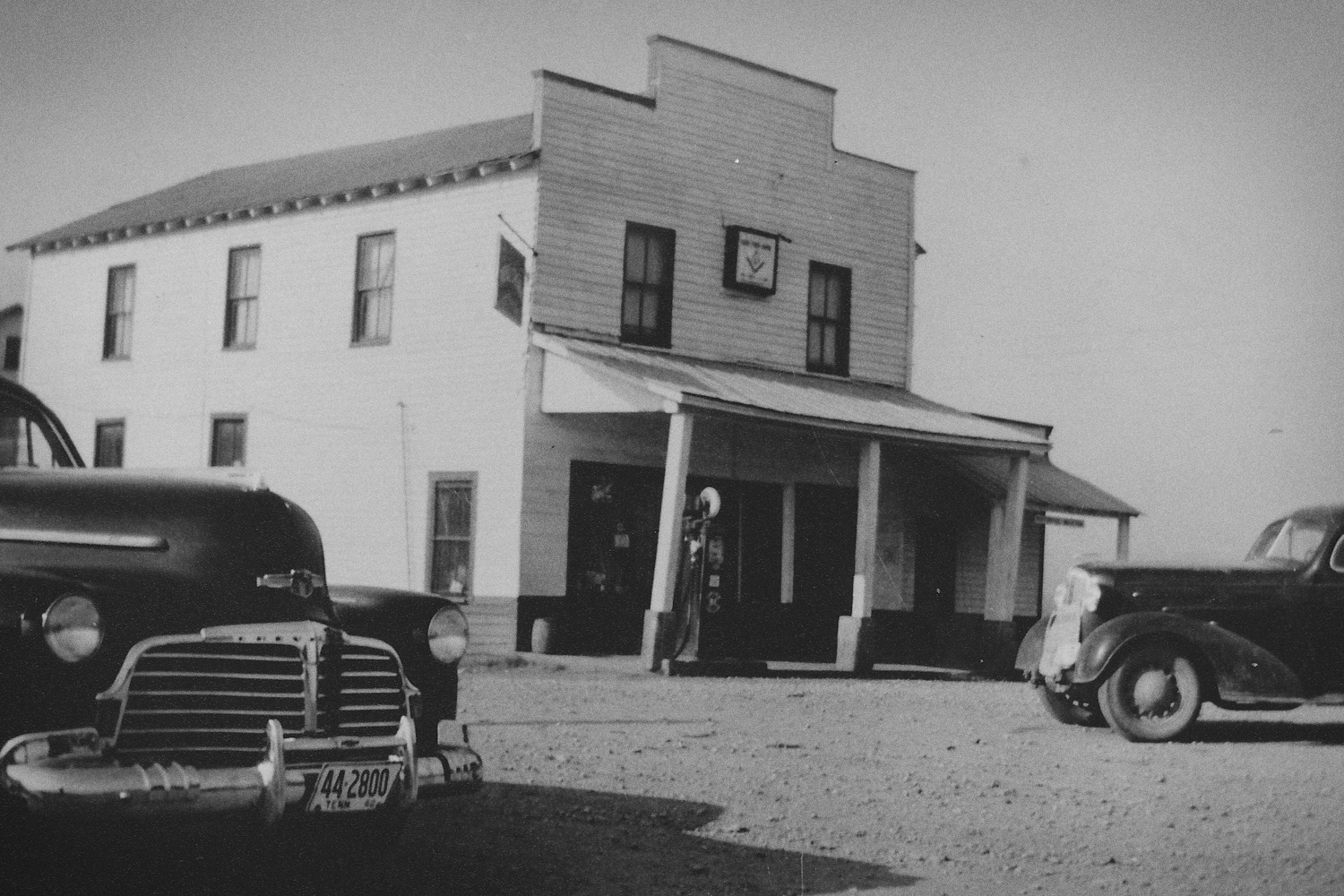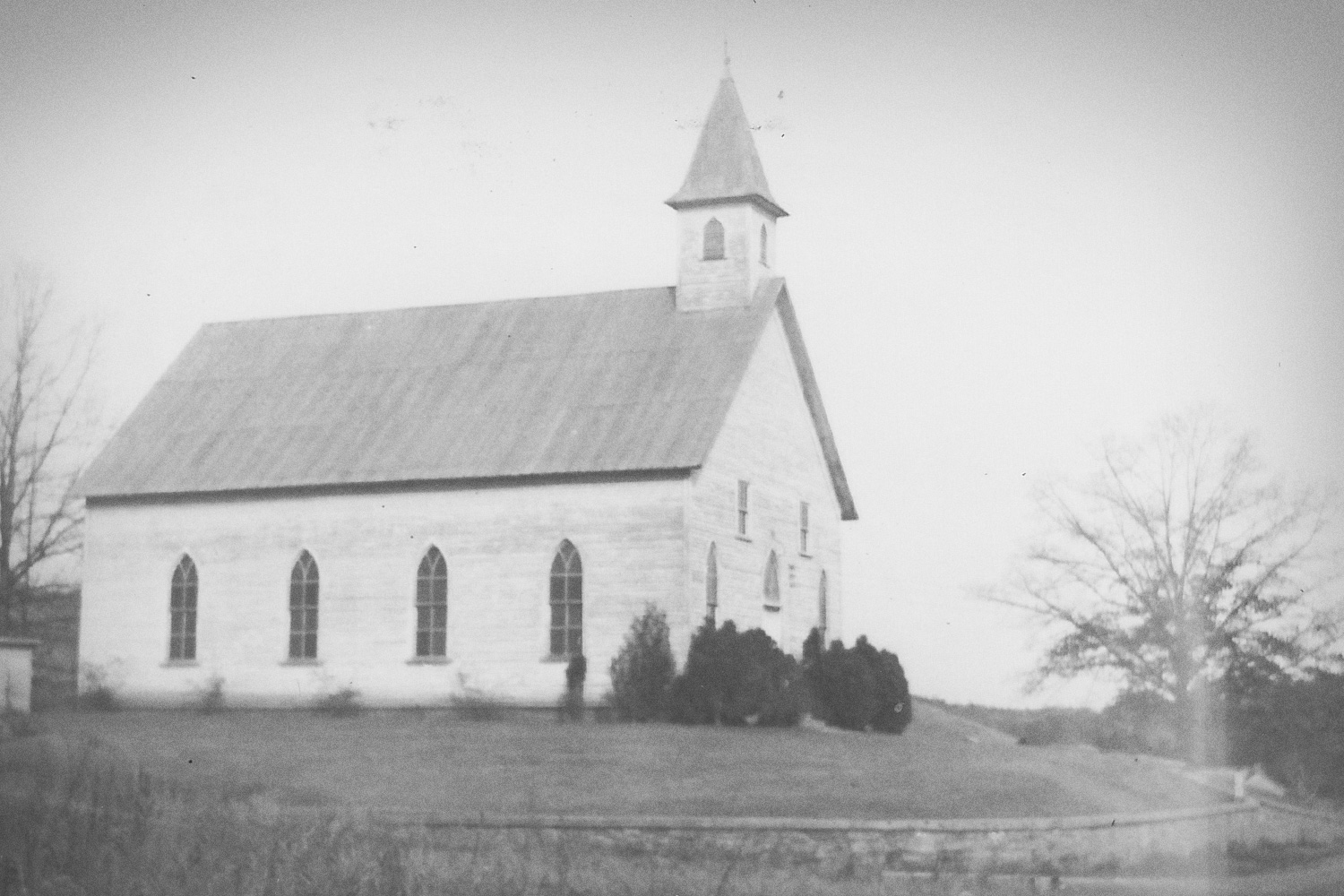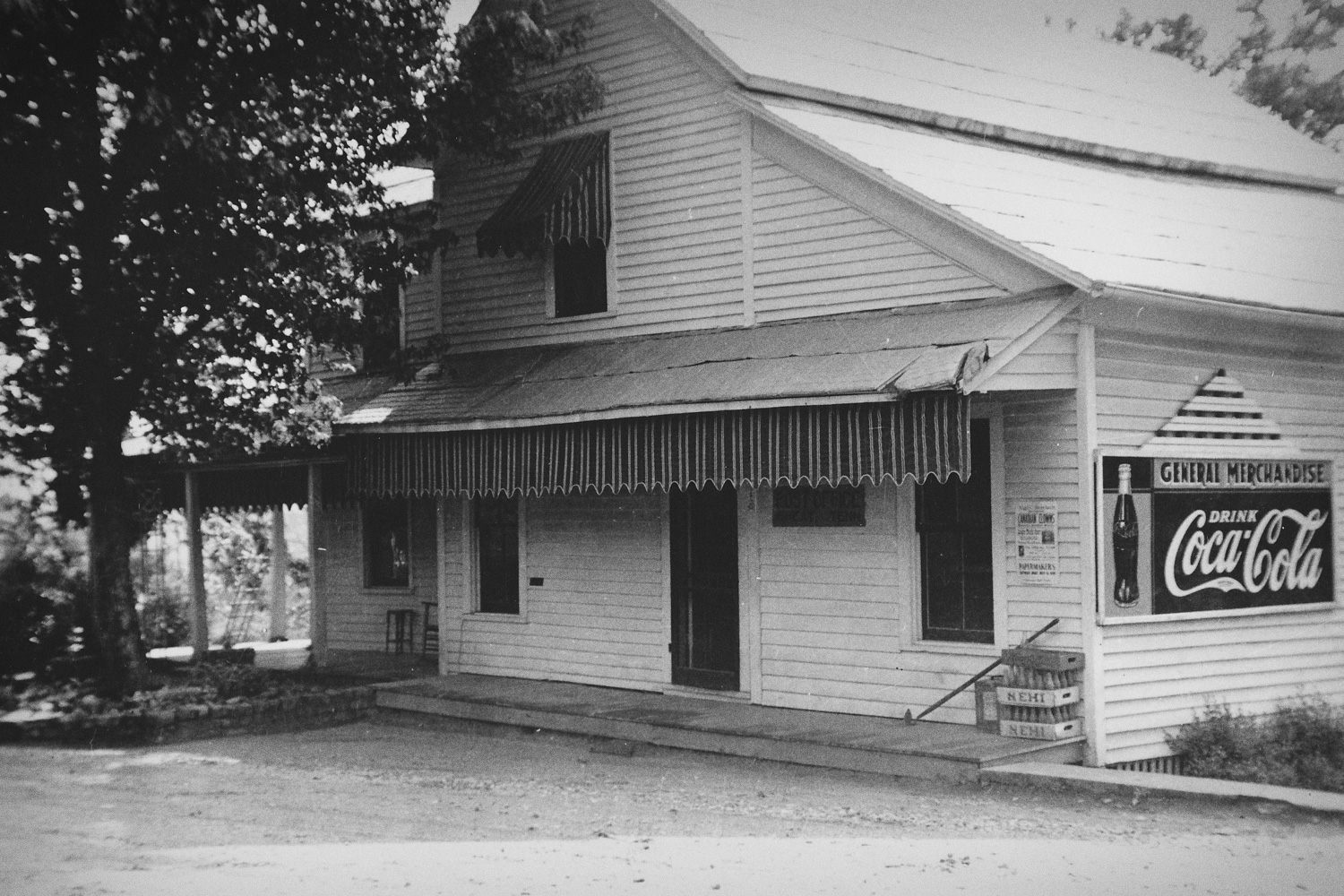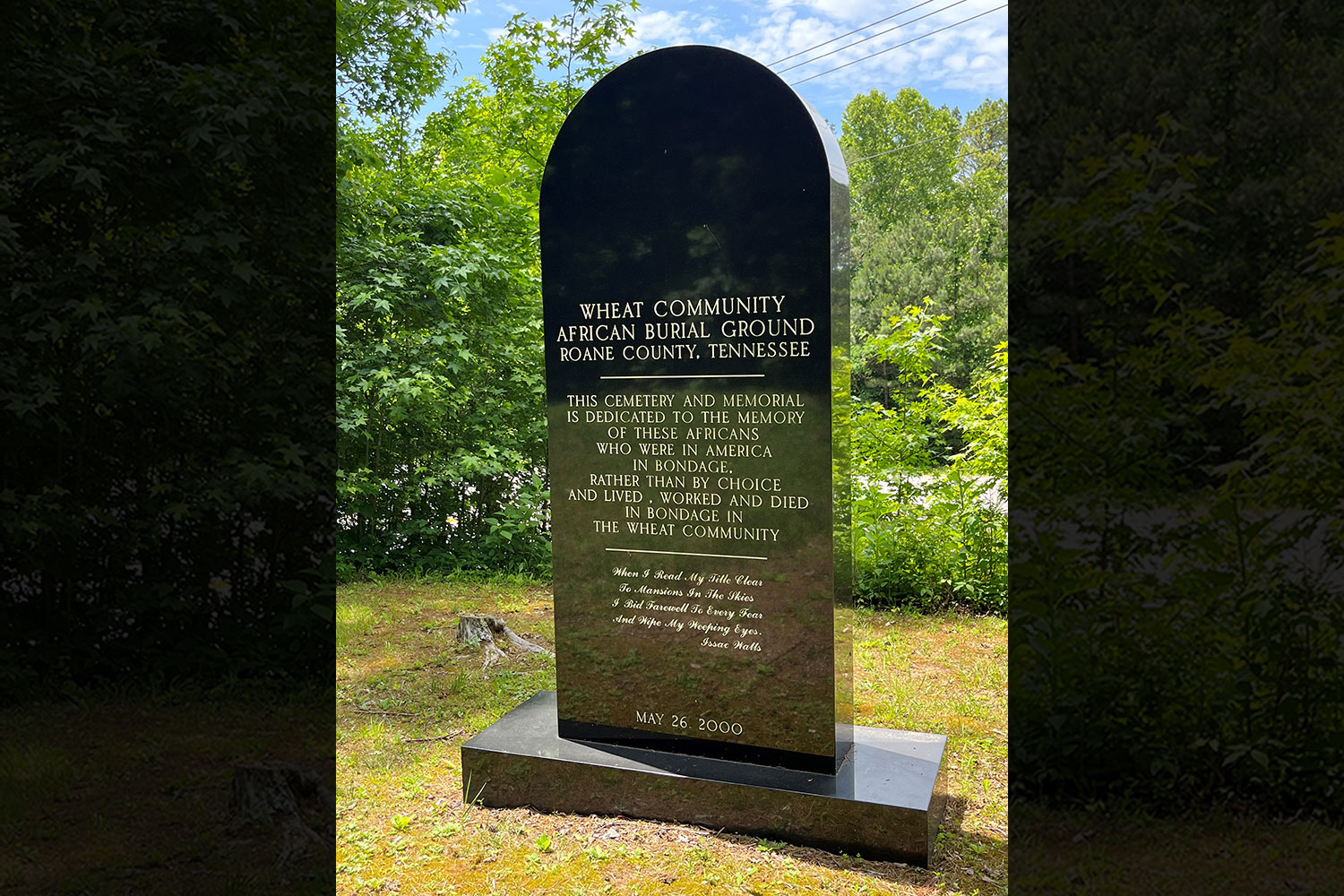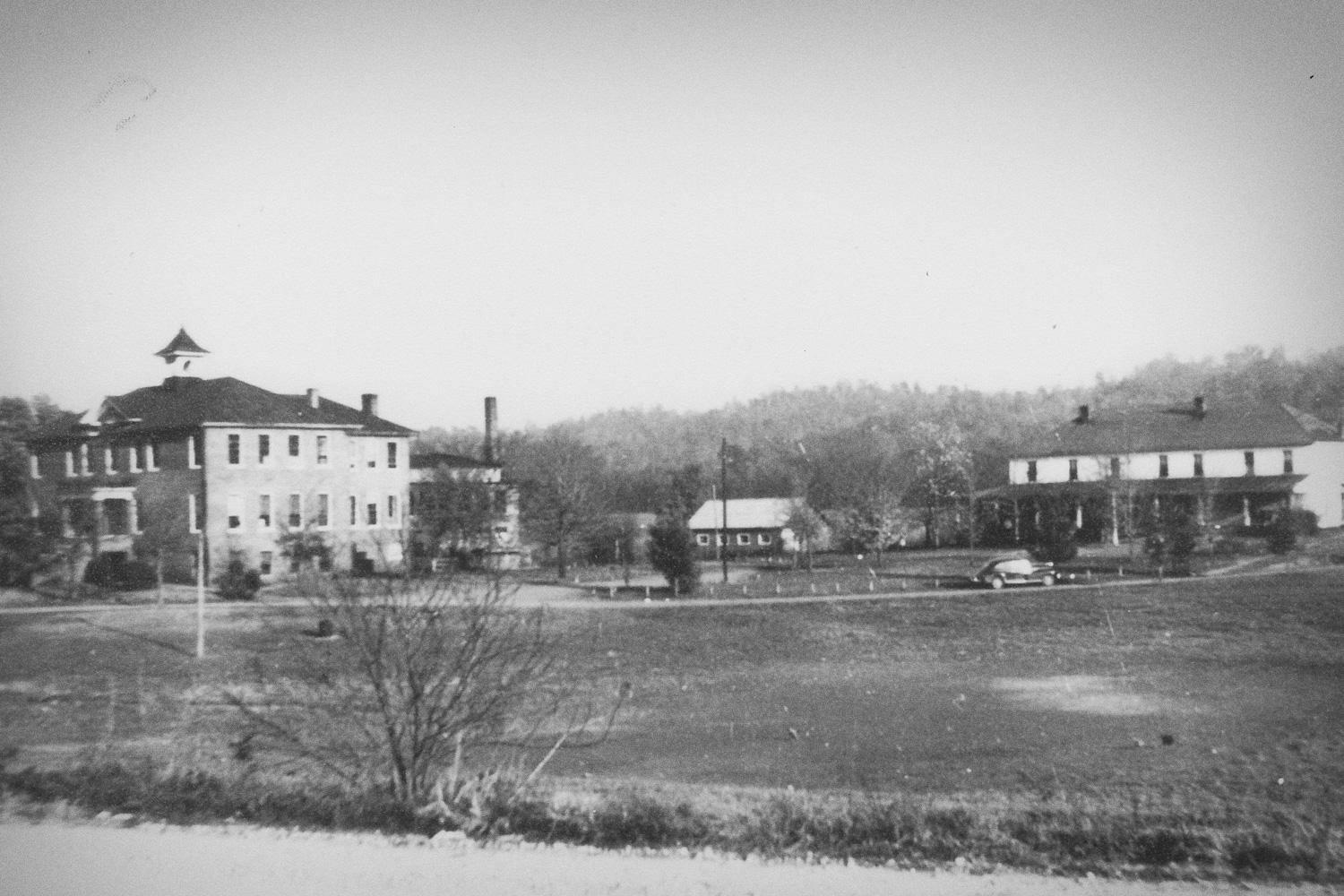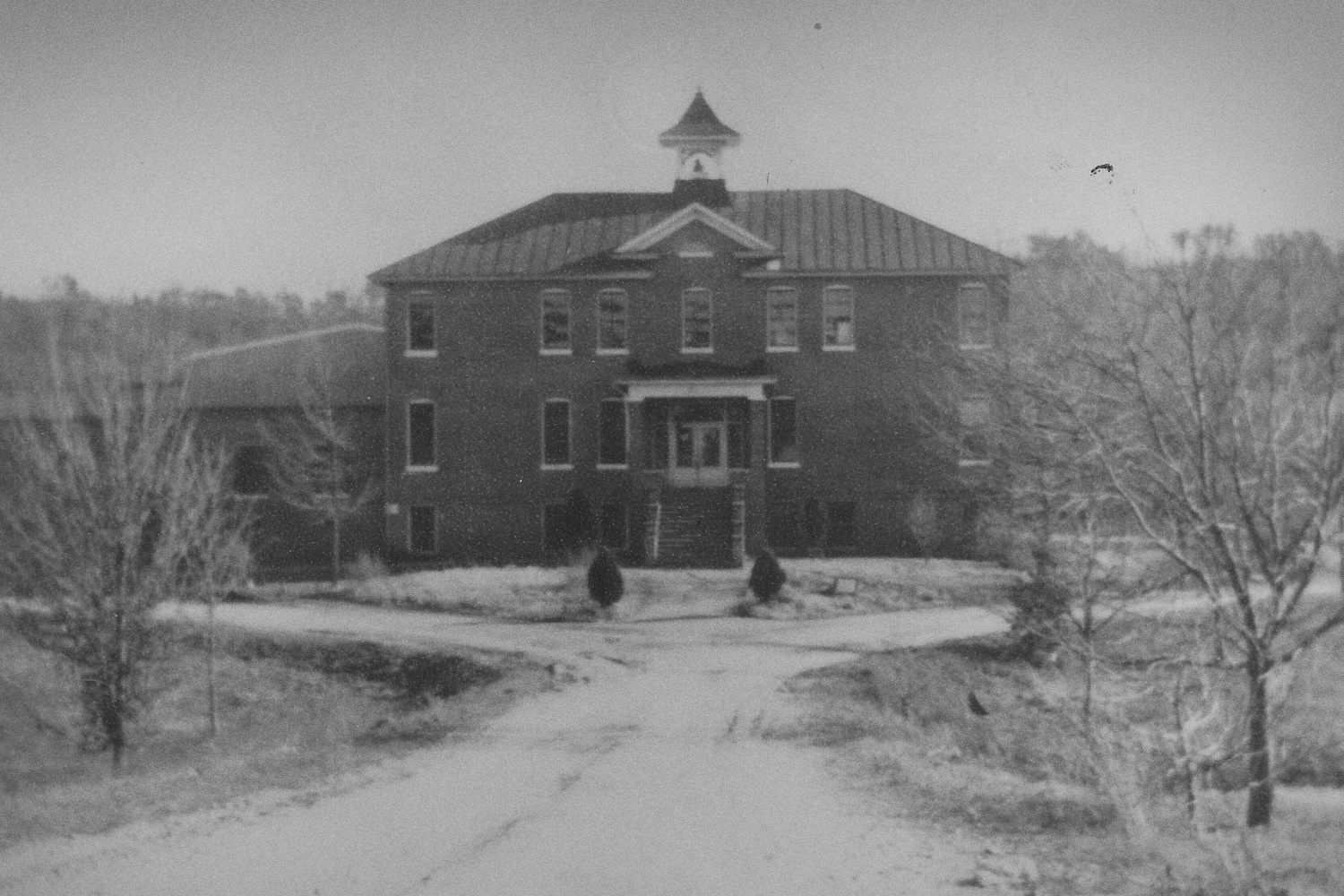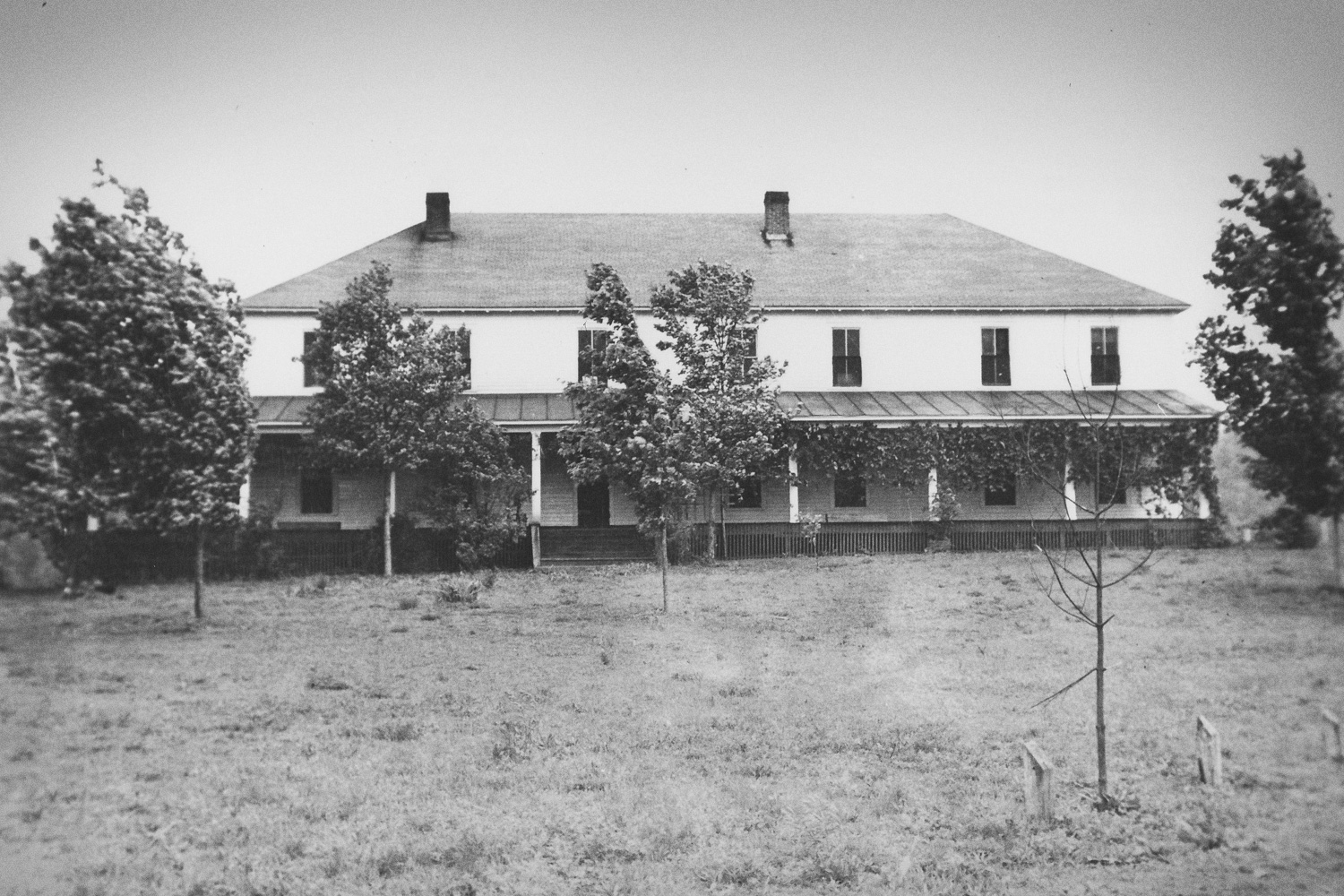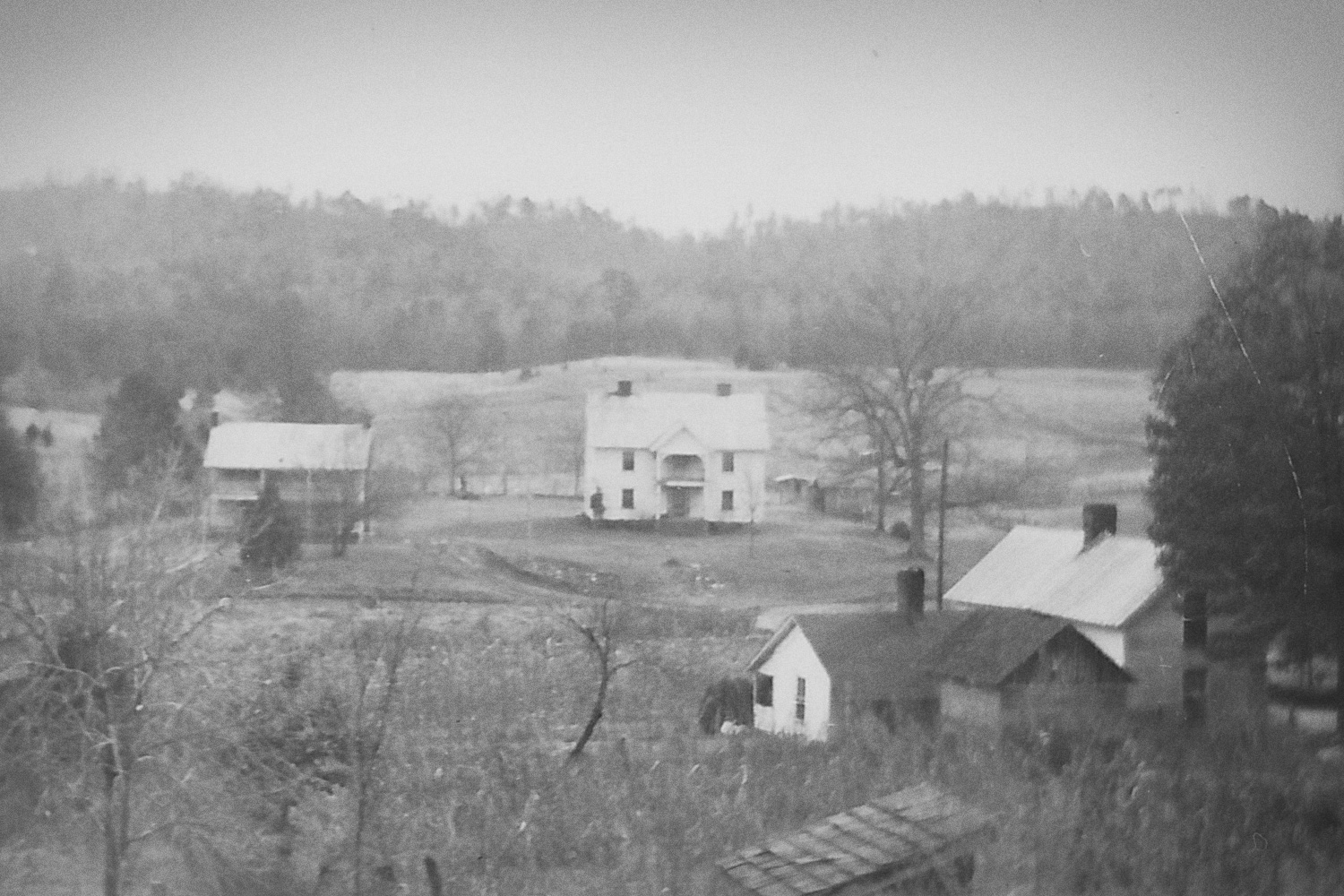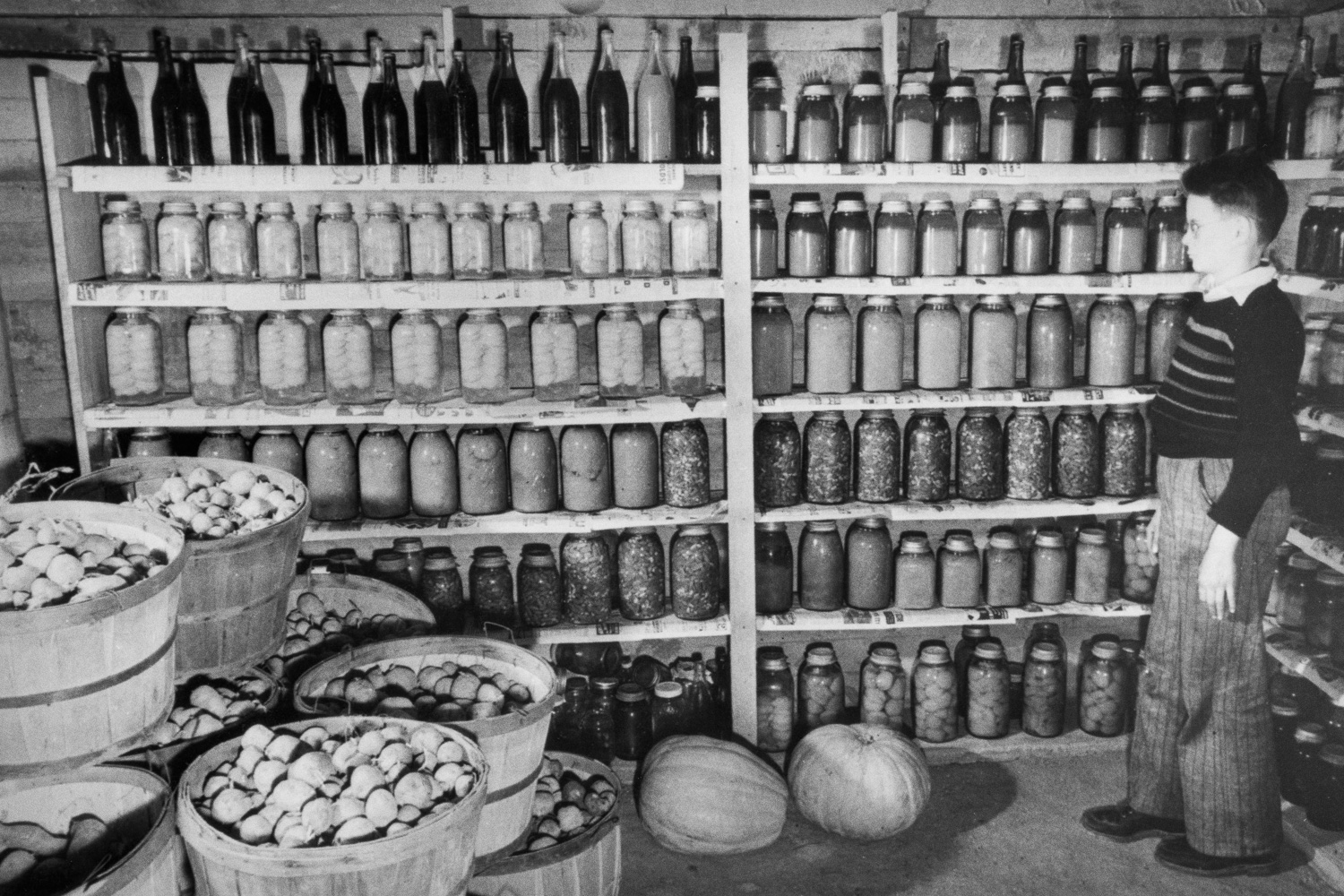A BRIEF HISTORY OF WHEAT
The Wheat Community was located in Roane County, Tennessee at the present site of the East Tennessee Technology Park (formerly known as the K-25 Site) in the west end of Oak Ridge.
The history of Wheat begins with the treaties of Holston (July 1791) and Tellico (October 1798) with the Cherokees that allowed the settlement of this portion of East Tennessee. Elias Roberts was one of the first settlers in Roane County. He moved from South Carolina in 1794 and lived in Sugar Grove Valley with his father-in-law, Robert Brashears until he bought land along the Clinch River in 1796. In 1799, he bought an additional 500-acre track astride Poplar Creek that is the present site of the East Tennessee Technology Park.
As the population in the area grew, timber was harvested and floated down the Clinch and Tennessee Rivers to saw mills in Chattanooga. Due to the stripping of the timber from the hills, the area became known as "Bald Hill." There were numerous post offices in the surrounding areas. In 1881, Henry Franklin Wheat opened a post office in the Bald Hill area; subsequently, the post office and community became known as Wheat.
Wheat eventually grew to a community that had three stores, a service station, Masonic Lodge, post office, elementary school, high school, college, three churches (Baptist, Methodist, and Presbyterian), and many houses, barns, and outbuildings.
Education and religion were a basic part of everyday life in Wheat. From 1850, when Robertson Schoolhouse was known to be functioning, there was always an educational institution present in Wheat except for a short period during and following the Civil War. In 1879, Rev. George Jones and wife, Lucinda, donated 250 acres to be used for religious and educational purposes in conjunction with the establishment of the Poplar Creek Seminary. This land was used to construct schools and 20-plus buildings that provided for student needs. One-half acre would be given to a person wishing to use it to build a house so students could attend school. All those living on the property had to have a member of the household connected to the school or provide housing to students. Free lumber was provided to build or improve a building and fuel was free. Tuition and housing rates were kept low and arrangements could be made to pay with farm produce, both fresh and canned, or services rendered. Five months of the school year were free and four months required a small fee. This land was conveyed to the Roane County Board of Education in 1908. The following is a list of schools known to have existed in Wheat.
SCHOOLS
Robertson Schoolhouse was one of the first schools in the area (mid-1800s) and was located a few yards east of the present George Jones Memorial Church. It was a small house made of round logs.
Bald Hill School was a subscription school founded in January 1873 by Rev. John Dickey of the Methodist Episcopal Church. Even though Dickey started the school, the Baptist and Presbyterian churches had a significant part in the school's organization. The school continued through 1878.
The Poplar Creek Seminary was founded in 1877 by the churches of Bald Hill. Rev. W. H. Crawford of the Cumberland Presbyterian Church served as the first president. This school was also supported by all area denominations. In 1885, the Trustees applied to the State of Tennessee to make the Seminary a four-year accredited college. The charter was granted on January 6, 1886, and the name was changed to Roane College.
Roane College met in a framed structure east of George Jones Memorial Church. It consisted of three departments: Primary (Grades 1-5), Preparatory (Grades 6-8) and Collegiate (4 yrs). Students lived in the Boarding House or with families in the area. In 1908, the property was conveyed to the Roane County Board of Education and the building - a wood-framed, two-story structure - was then used as the Wheat School until a new building was completed in 1916. The college building was demolished shortly after 1916.
Wheat School was established in 1908 and met in the former Roane College building until a new brick building was constructed in 1916. With the influx of more children, the building was expanded in 1927 with additional class space and a gymnasium. When the students left for Christmas holidays in 1942, the school did not reopen due to its acquisition by the federal government for the Manhattan Project. It served as office space and a training facility for the first few years of the Manhattan Project and was demolished in 1950.
Homecomings for the Poplar Creek Seminary and Roane College began in 1932 and have continued annually on the first Sunday of October. As time has passed, the reunions have transitioned to homecomings of former residents of Wheat. A short meeting is held in the George Jones Memorial Baptist Church that consists of recognition of the former students of the Wheat School and a reading of the names of those from Wheat who have passed away during the preceding year. A spiritual message is then delivered by a former member of the Wheat community or a direct descendent followed by a potluck dinner on the grounds.
CHURCHES
George Jones Baptist Church: The origins of the George Jones Memorial Baptist Church began as an arm of the Sulphur Springs Church of Christ of Oliver Springs in 1852. It met at the Robertson Schoolhouse, which was located a few yards from the present George Jones Memorial Church. In July 1854, the Robertson Schoolhouse church petitioned Sulphur Springs to be constituted as the United Baptist Church of Christ. The petition was granted and the church, later known as the Mt. Zion Baptist Church, was established. In 1901 a new building was constructed and the church was renamed George Jones Memorial Baptist Church for the Rev. George Jones who had been in Wheat since 1856. It was dedicated on May 12, 1901. It is the only remaining structure in Wheat and is opened on the first Sunday in October for the annual Wheat homecoming. The bricks for the foundation were made on the property of Jonas Arnold, a residence of Wheat.
Crawford Cumberland Presbyterian Church: Established on August 16, 1891 by Rev. S. B. West and Rev. W. H. Henry, the church was named in memory of Rev. Wm. H. Crawford to honor a man who had been both an academic and religious educator for many people in Wheat. The congregation met in the Methodist Church until 1902 when a new building was constructed. After the building was purchased by the Manhattan Project, the church moved to Harriman. The building continued to be used by the Manhattan Project until it was razed. A memorial marker was placed at the site of the church by members in 1950.
Methodist Church: There is evidence that a Methodist congregation met in Wheat prior to the Civil War, but the first mention is in 1873 when a minister, John Dickey, from the Harriman Circuit was sent to Wheat. The Methodist building was located at the west end of the Bob Jones Baptist Cemetery prior to 1901. The Presbyterian congregation also met in this building until they built a new building in 1902. The Methodist congregation then met in the Cumberland Presbyterian Church and were supplied a minister one Sunday a month.
AFRICAN BURIAL GROUND
An enslaved African burial ground is located within the Wheat Community. The area was formally identified as “Atomic Energy Commission Cemetery #2 – Slave Cemetery.” A marker placed there notes that in 1979 a former resident of the Wheat Community counted between 90 and 100 graves on the grounds with no inscribed markers. It is presumed that slaves who once lived in the area and their descendants are buried in this cemetery; their names will never be known. A monument was erected in 2000 that commemorates the cemetery as the “Wheat Community African Burial Ground, Roane County, Tennessee."
PEACH ORCHARDS
Wheat had seven major peach orchards and numerous smaller ones. These orchards can be seen in a 1945 photograph taken during the construction of the K-25 Site. During the peach harvest, everyone in Wheat was part of the harvest, which included picking, grading, and shipping the peaches. Don Watson provided a description of the 1935 harvest of the Highland Orchard, the second largest orchard in Wheat, located adjacent to the present Hartland Estates and spanning 300 acres. Twenty thousand bushels of peaches were shipped from the Highland Orchard on refrigerated rail cars to Gingili Bros. in Cincinnati, Ohio. In several bushels, Mr. Watson placed a self-addressed envelope with a card asking where the peaches were bought and what the cost was. He received a response from Slate, Wisconsin, and the price was a bushel for $3. Over-ripes and blemished peaches were sold at the old Western Avenue Farmers Market in Knoxville and everyone in Wheat had plenty for eating and canning.
MCKINNEY STORE AND MASONIC LODGE
Located at the "Y" of the Robertsville to Wheat Road was the McKinney General Store. The store occupied the first floor, and the East Fork Masonic Lodge #460 was located on the second floor. The Lodge was organized in 1874 and in 1942 it chose to remain functional and moved to Dyllis. Nancy Hembree owned the building.
POST OFFICE AND STORE
The first Post Office in the area was the Poplar Creek Post Office established in 1838. In 1881, Henry Franklin Wheat became the postmaster and changed the name of the post office, and community, to Wheat. The post office was housed in a store across from George Jones Memorial Church for over 40 years. The building containing the store was the original Mt. Zion Baptist Church building. When the new church was built (George Jones Memorial, 1901), the old building was moved down the hill and across the road. The general store was operated by the A. N. Adams family. The post office was located in the front northeast corner until the building burned in 1940. The post office was then relocated to a side room in the McKinney Store.
MILLS
Through the years, since the first settlers entered the area, gristmills for grinding corn were located along the creeks of the area. Bear Creek and the East Fork of Poplar Creek had several mills. In the late 1800s and early 1900s, these mills sometimes served as the local post office. The Welcker's Mill was located at the mouth of the East Fork of Poplar Creek. The foundation of this mill can be seen during the winter when the water level of Watts Bar Lake is low. The mill dam was 10-feet high and backed up the creek for one and a half miles. Gallaher's Mill (later known as Russell's Mill) was located further up the East Fork of Poplar Creek. It was destroyed by high water in September 1902 and never rebuilt. The grinding stones from this mill are on display at the George Jones Memorial Baptist Church. A quarter mile above Gallaher's Mill, Jim Sivey had a small mill powered by a motor in the 1920s. These are just a few of the numerous mills located through the years in this area.
TENNESSEE VALLEY AUTHORITY
In 1935, TVA launched an agricultural cooperative program that was to improve agriculture through fertilizers, farming techniques, and business practices. Wheat was chosen to be one of the communities involved in this venture. Later, in 1942, this was one of the arguments unsuccessfully used to prevent the federal government from acquiring this land for the Manhattan Project. Electricity was brought into the area in 1936. In 1937, the community formed a farm cooperative. There were plans for a cannery, locker refrigeration, and potato storage house to be built in 1943 if the government had not taken the land.
MANHATTAN PROJECT
In 1942, the federal government chose 59,000 acres in East Tennessee to construct Clinton Engineer Works for the Manhattan Project, the world's first atomic bomb project. The site was chosen because it met certain conditions: a large area, accessible by rail, thinly populated area, a short distance from a sizable city, easily controlled, and a natural boundary (river and ridges). All the residents were told to leave within a short period of time, often as little as two weeks. The offers for the land were approximately $34.26 per acre in Roane County and $44.10 per acre in Anderson County. The compensation did not include relocation expenses and required that the land owners not be compensated until the land had been vacated. Often compensation was not paid until six months to a year following condemnation.
For some residents of Wheat, this was their second move. Numerous families had previously been displaced by other federal projects in the area that included the formation of the Great Smoky Mountains National Park in the late 1920s and the construction of Norris Dam in north Anderson County in 1933. Some of these families settled in the valley of East Fork of Poplar Creek, Bethel Valley, Bear Creek Valley, and Melton Valley only to once again be forced from their land to find a new home.
<< BACK


